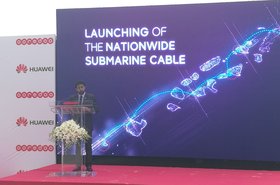Qatari telecoms company Ooredoo has launched a new data center in the Hulhumalé smart city in the Maldives.
The facility is built to Tier III standards, but not yet certified. Given its location, the data center is designed to be flood-resistant up to seven meters.
"We believe that the Maldives can potentially offer a very high availability for all types of Data Centre services, connecting local and regional businesses to uninterrupted connectivity and unlimited possibilities by eliminating geographical challenges, ensuring business continuity and stable growth," Ooredoo Maldives CEO Najib Khan said.
"With this important step towards a truly Digital Maldives, our aim is to establish the Maldives as a technological hub in the region.”
Khan called the facility "the first-ever data center in the Maldives," but the small archipelagic state has an existing tiny data center footprint.
Back in 2005, a data center was built in the National Center for Information Technology building to host e-government workloads, and enterprises run server rooms in the country. But operators have generally been wary of building in the country, the third most endangered island nation due to flooding from climate change.
Last year, while warning that climate change was an existential threat to the nation, the Maldives' Communications, Science, and Technology Minister tried to spin one positive - that the nearby seabeds are tranquil.
"It may very well be one of the best places for an Internet exchange point of the future. We already have underwater villas, restaurants and would love to host your data centers underwater,” Mohamed Maleeh Jamal said at the 17th Science and Technology in Society Forum underway in Kyoto, Japan. Microsoft is currently experimenting with underwater data centers with Project Natick, but the concept is not widespread.
The threat of rising sea levels has also led to the creation of Hulhumalé. A reclaimed island, the region was built by dredging sand off the seafloor and pumping it onto the island.
A decades-long project, the island hopes to eventually house 240,000 Maldivians. It also has lofty smart city and digitalization targets, only possible with a matching data center infrastructure.




